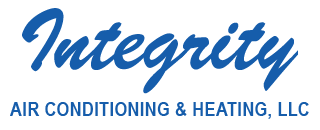
A furnace is usually a background player at home, ensuring you're warm in the cold winter months. It regularly isn't noticed until something goes wrong.
One cause could be that your furnace has a cracked heat exchanger. It can be a safety risk, so it’s critical to know the symptoms of a cracked heat exchanger and what to do if you suspect that may be the problem.
What Is a Heat Exchanger in a Furnace?
A heat exchanger helps move heat from the combustion chamber of your furnace to the air that flows throughout the ventilation. It typically does this with coils or tubes that heat the air while functioning as a barrier to keep the gasses produced in the combustion chamber, called flue gasses, from leaking out into your home.
Is a Cracked Heat Exchanger Dangerous?
Because of its central role, it isn't surprising that a damaged heat exchanger can pose a risk. A damaged heat exchanger can allow dangerous gasses – including carbon monoxide, which can be lethal – to circulate throughout your home.
For this reason, don't ever run your heating if you think you're dealing with a cracked heat exchanger, as doing so could make your entire family ill. Contact an HVAC professional as soon as possible if you are worried your heating has a cracked heat exchanger that needs repair.
Four Symptoms of a Cracked Heat Exchanger:
- Furnace switches off: A crack in your heat exchanger can cause your furnace to switch off.
- Odd Smells: If the air escaping your furnace has an intense chemical smell, it might be a sign gasses are leaking through cracks in your heat exchanger. These byproducts, which may smell like formaldehyde, are a common warning sign.
- Carbon monoxide alarm goes off or you feel poisoning symptoms: If a cracked heat exchanger is releasing carbon monoxide into your home, your carbon monoxide alarm should go off or household members might start experiencing signs of carbon monoxide poisoning. Symptoms include headaches, dizziness, weakness, nausea, vomiting or feeling drowsy. If the alarm goes off or you feel unwell, exit the home as soon as you can and then call for help.
- Soot: If you see black sooty buildup on the exterior of your furnace, it’s an indication something could be seriously wrong.
What to Do if a Furnace Heat Exchanger is Cracked
If you suspect your furnace has a cracked heat exchanger, hire a pro with extensive experience in furnace installation Phoenix as soon as possible so they can take a look at your system and, if required, perform a furnace heat exchanger replacement. Costs will vary depending on the situation, but estimates often hover around $1,000 to $3,000.
However, the good news is that heat exchangers are often protected by the warranty. It's a good idea to review the warranty paperwork on your furnace, because while the warranty may not cover the entire cost of repairs, it could significantly reduce your bill.
How to Prevent a Cracked Heat Exchanger in Your Home
One of the best ways to prevent a problem in your furnace overall is through regular furnace maintenance. Furnaces provide the best possible return on investment when they run efficiently. Calling a trained professional to examine your furnace for broken-down parts, clogs in the air filters and other likely problems can keep you from getting a big bill later on.
It’s also helpful to take a look at your furnace filters every few months – it’s recommended some filters be swapped out every 90 days or sooner if they are dirty or grimy. While the filters aren't a part of the heat exchanger itself, the strain of pulling air through a clogged filter makes your entire furnace work more vigorously to accomplish its job. And the harder your furnace works, the more wear and tear components like the heat exchanger will endure.


